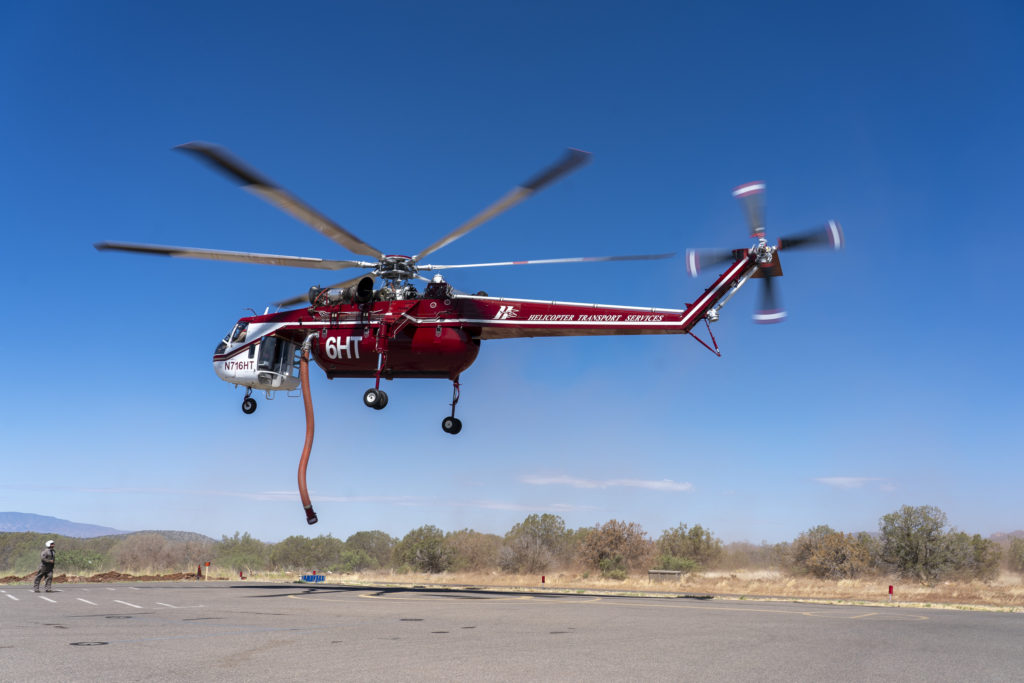The Sedona Airport is playing a big role in Northern Arizona during yet another concerning fire season.
“Residents need to understand we are using the [Sedona Airport] because of the logistical support and they can get pulled off for more fires too since this is kind of the central part of the state,” Arizona Division of Emergency Management Public Information Officer Mike Reichling said. “Payson has a heliport setup, too, and then there are some other ones around, but the airports all share resources as needed. And this is a good location for that.”
Since the increased severity of the Pipeline and Haywire fires northeast of Flagstaff, the Sedona Airport and its airspace became a hub for the firefighting air support helicopters. These aircraft can hold up to 60,000 gallons of water at one time for overhead support.
Throughout this past weekend, the airport hosted two Blackhawks, two Bell 407s, two Astar 350s, one Chinook, one Super Puma and one Bell 205. All these helicopters came from all over the country to help fight the two fires just about 50 miles north of Sedona.
“They got about 60 support people there in Sedona Airport. They do everything from bucket drops and sling loading materials and cargo to transporting the firefighters in the field. They’ll do reconnaissance for the fire, reporting back to the command where information for that,” Reichling said. “They also have Helico in Sedona, which is the task force that controls the helicopter in the air, where they’re at, and where they need to go based on the request from the ground.”

After burning for over a week ago now, the fires near Flagstaff covered over 32,000 acres, with thousands of homes evacuated in the area — for the second time in the last month — after the Tunnel Fire burned through the same area in mid-May.
Last Thursday, Governor Doug Ducey announced a state of emergency after the fires combined and continue to burn at increased speed. Since then, crews have be able to contain some of the fires.
Coconino National Forest reported 60% containment for the Pipeline Fire and 45% containment for the Haywire Fire on June 21. Around 915 personnel are actively working on the fires as well, according to Reichling.
Investigations for both fires are still underway. Reports broke early on after Coconino County Sheriff’s Office arrested camper Matthew Riser for burning toilet paper around the area where the fire began. Officials have not released the cause yet, as Riser still remains in detention during his trial.
“We chose the Sedona area due to logistics,” Reichling said. “Flagstaff is a relatively busy airport and it’s not logistically able to support this many helicopters, with everything else going there.”
State Route 89 and surrounding roads were closed briefly during the incident, but have since reopened. Areas around O’Leary and Haywire Crater remain in the “GO” evacuation stage.